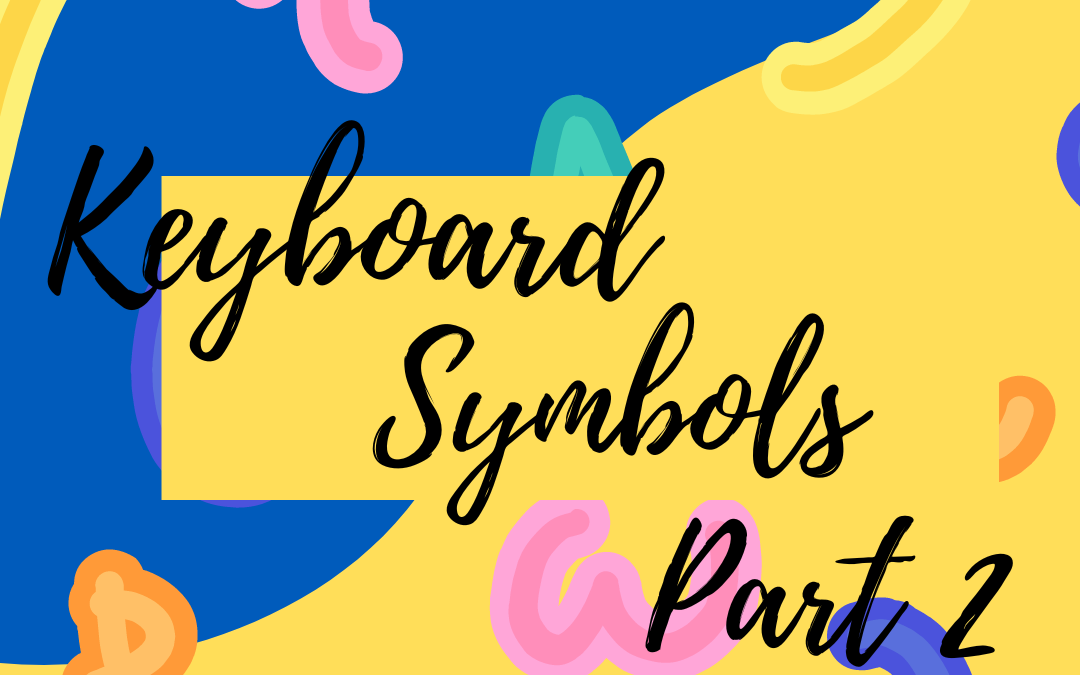More Keyboard Symbols in English
My last blog focused on how to say the main keyboard symbols you need to tell people your email address. Our company address is “Second AT Second-Language DOT net” (second@secondlanguage.net), so we only have to worry about two punctuation marks. If you work for a bigger company (or one with a sadistic IT manager), you might find you have to
manage a few more…
If you want to read the first part, click here: https://secondlanguage.net/2023/01/16/keyboard-symbols/
Keyboard Symbols: dash ( – )
A dash ( – ) is similar to a hyphen, which strictly, is reserved for joining the parts of compound words like co-worker, but most natives will accept either name interchangeably. If, instead of floating in the air, your dash crawls along the floor ( _ ), it’s officially called an underscore, but you should get away with “low dash” or “bottom line” in an emergency.
Keyboard Symbols: slash ( / )
Slash is the symbol for mathematical division, and can be used for fractions (1/4) or as a substitute for per, as in “€5/kilo”. In sword-fighting, it originally meant an offensive swing of the blade to try to cut an enemy. Reversing the move produces a backslash ( \ ), similar to a tennis player’s backhand.
Keyboard symbols: hash ( # )
Hash is the original number symbol. It’s interchangeable with the word ‘number’ or its common abbreviation no. in uses like Serial #1234 567890. Since 2007, it’s mainly used in combination with a topic label or tag, to form a hashtag. If you’re one of the many people who now use the word hashtag to refer to the symbol in general, you’re officially correct, whatever
old-fashioned pedants tell you. The English language moves fast…
Keyboard Symbols: brackets ( )
Finally, brackets are handy when you want to add extra information or an example (like this). If you’ve already opened brackets and you want to add extra to your extra, you move to square brackets ( [ ] ) and finally, but very rarely, to curly brackets ( { } ). If there are any other areas of your keyboard that give you problems in English, let me know via LinkedIn or through our website (https://secondlanguage.net/) and I’ll cover them in a future blog.
For my next trick, I’ll be moving on to the English you need to write an effective online job adthat gains the interest and respect of the best native-speaking candidates for your position.


